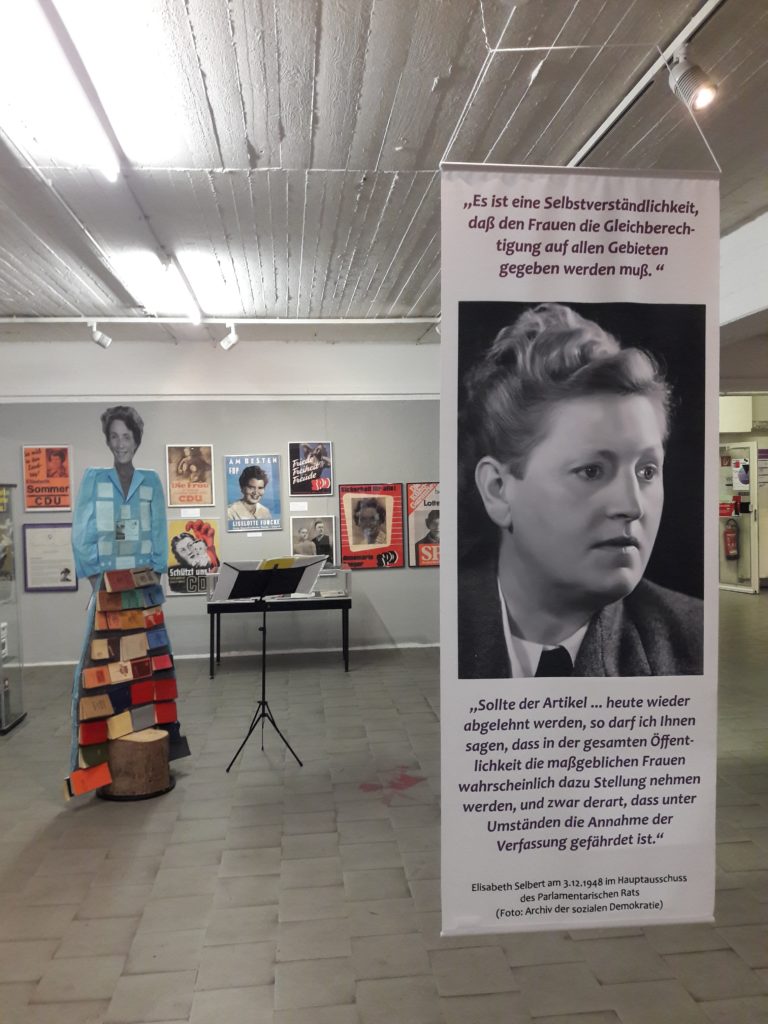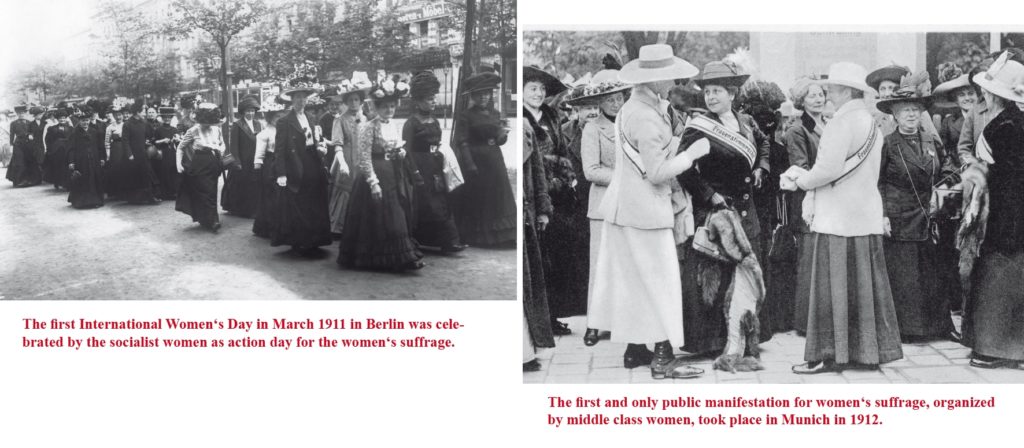On the occasion of 100 years of women’s suffrage and 70 years of gender equality in the German constitution Women’s Museum Bonn shows an exhibition about the fight for rights in the first and in the second women’s movement.

The exhibition explains the incredible obstacles the suffragettes had to overpower: bureaucratic hindrance, legal interdictions for women, prejudices – not only by politicians, but many social groups, and last but not least disagreement among the engaged women. At the beginning of the 20th century most women’s groups operated only reluctantly and avoided „propaganda actions“, whereas a small minority dared to demand their right in the public. The central strategy of women’s suffrage associations was to submit petitions. But all efforts were in vain. Without the revolution in November 1918 German women would not have obtained the suffrage in the same year.
After this success the fight continued because women had many problems to run for the parliaments. Nevertheless, the number of women in the Reichstag was small and became even less. During the Weimarer Republic the female deputies managed to improve the legal situation of women. But in the NS-dictatorship women lost the passive right to vote and some more achievements.
Women made further progress after the defeat of the Third Reich. But when the constitution of the new republic was prepared, again women experienced unpredictable resistance against gender equality. The lawyer Elisabeth Selbert initiated the biggest campaign for women’s rights in 1949. In the exhibition some original letters with the demand for equality are exposed as well as protest letters when Chancellor Adenauer refused to call a woman to be minister. A last big step marks the start of the new women’s movement in the early 70s. It put the focus on self-determination.


